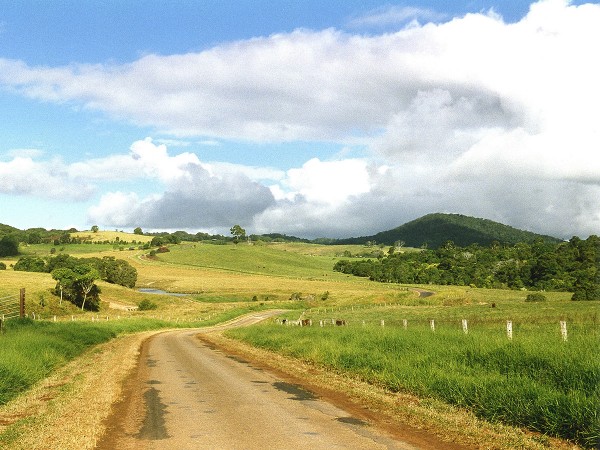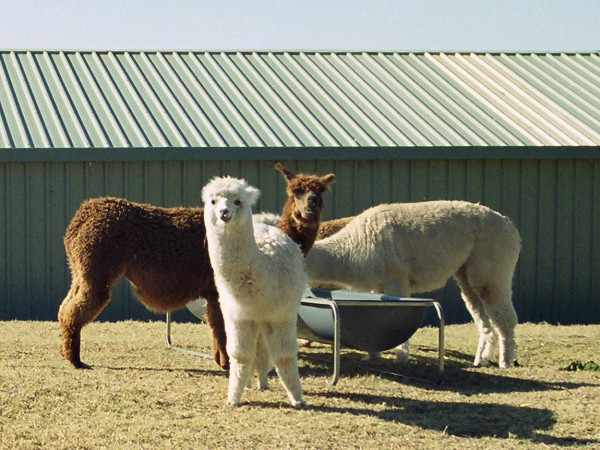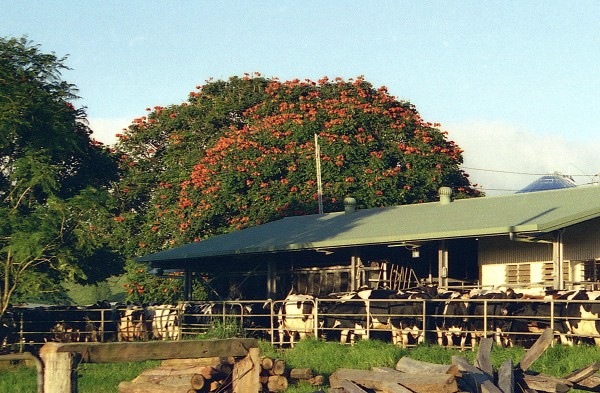 A bumper harvest should be good news for farmers – but not if it drives down prices. This is the position facing many Australian farmers. After a relatively wet summer a year ago and a mild winter this year, crop yields have soared. But the prices farmers can get in wholesale markets have been so low that many have resorted to setting up their own farm shops or selling in farmers’ markets or from the backs of ‘utes’ (utility vehicles, i.e. pickup trucks) or at roadside stalls.
A bumper harvest should be good news for farmers – but not if it drives down prices. This is the position facing many Australian farmers. After a relatively wet summer a year ago and a mild winter this year, crop yields have soared. But the prices farmers can get in wholesale markets have been so low that many have resorted to setting up their own farm shops or selling in farmers’ markets or from the backs of ‘utes’ (utility vehicles, i.e. pickup trucks) or at roadside stalls.
And the supply problem is not just one of increased domestic supply: cheap food imports, often of inferior quality, have been flooding into Australia. Increasing food exports,  especially to Asia, would help Australian farmers, but here again there is competition in these markets from other countries.
especially to Asia, would help Australian farmers, but here again there is competition in these markets from other countries.
The problem of increased Australian supply is even more serious for Australian farmers in areas where harvests have not been so good. Australia is a huge country and conditions, although generally favourable this year, have been poor in some areas. Here farmers face the double disaster of low output and low prices.
Australian dairy farmers too are facing problems of falling prices. Price deregulation and the monopsony power of supermarkets have driven down  the price of milk and other dairy products. Since deregulation in 2000, the number of dairy farms has halved, as many smaller family farms go out of business and larger ‘industrial-scale’ farms grow.
the price of milk and other dairy products. Since deregulation in 2000, the number of dairy farms has halved, as many smaller family farms go out of business and larger ‘industrial-scale’ farms grow.
So are there any solutions? The BBC article looks at things being done in Tasmania to help small farmers, but questions whether small farmers have much of a future more generally in Australia?
Articles
Australia’s small farmers struggling with low prices BBC News, Phil Mercer (31/10/13)
Commodity prices edge lower in October Sky News Australia (1/11/13)
Low prices spoil perfect season for Australian farmers ABC News, Eric Tlozek and Courtney Wilson (18/9/13)
Agri-businesses taking over the farm The Guardian (Australia) (6/11/13)
Data
Commodity prices Index Mundi
Agriculture in Australia Wikipedia
Farm inputs & costs Dairy Australia
Questions
- How does the fallacy of composition relate to the ‘problem’ of good harvests?
- How price elastic is the demand for specific crops likely to be? Why may individual farmers face an elasticity of demand close to infinity?
- Illustrate the problem for small farmers in Australia with a demand and supply diagram.
- Is there any way in which farmers, either individually or collectively, can make their demand less elastic?
- Comment on the following statement by a sugar cane farmer: “We’ve got that much money tied up (in the business) we just can’t walk away”. Under what circumstances would it make sense to ‘walk away’?
- How does the monopsony power of supermarkets influence the prices farmers receive?
- Discuss ways in which the federal government in Australia could support farmers.
Up until a year ago, milk and cheese prices were soaring woldwide (see Cheddar – the king of cheeses at £2000 per tonne). A surging world economy and rapidly growing demand from China and India were driving up commodity prices, including milk and milk-based producs. In the UK, average farmgate prices for milk had risen from 19 pence per litre (ppl) in 2006 to 27.4ppl by October 2008 (see here for data). Since then, however, as the global economy has plunged into recession, milk prices have fallen. By September 2009, the farmgate price had fallen by over 18 per cent to around 22.4ppl. With rising costs for fuel and cattle feed, many dairy farmers are now making a loss and are either quitting, or considering quitting, the industry.
It’s a similar story in Europe, North America and other dairy producing regions of the world. In Europe “the mood is turning sour. Last week 300 tractors dragged milk containers over fields in southern Belgium, dumping a day’s worth of production (see video). Similar protests were made in Germany, France, the Netherlands and Luxembourg. The crisis has driven many EU farmers into a ‘milk strike’, with thousands refusing to deliver to the industrial dairy conglomerates that produce everything from skimmed milk to processed cheese.”
So is this just market forces in action and will prices rise again as the world economy recovers? Or is it a reflection, in part, of the monopsony power of the supermarkets and the milk processing industry? The following articles look at the issues, both in the UK and the rest of Europe and in the USA.
Milk ‘strikes’ and shortages hit Europe as UK dairy industry reels from crisis Observer (20/9/09)
German agriculture ministers meet as European milk crisis escalates Deutsche Welle (17/9/09)
EU Milk Strike Joined by More Than 60,000 Farmers, Group Says Bloomberg (18/9/09)
EU to boost aid for dairy farms BBC News (17/9/09)
Milk: Commission proposes further measures to help dairy sector in short, medium and long term European Commission Press Release (17/9/09)
Milk output fell in August as dairies cut herds Chicago Daily Herald (19/9/09)
New England tries to save dairies The News Journal (Delaware) (20/9/09)
Questions
- For what reasons are many dairy farmers now making a loss?
- For what reasons has the power balance in the wholesale milk market shifted towards milk purchasers (such as supermarkets) and away from farmers?
- How would a phased liberalisation of EU milk production help the UK’s dairy farmers?
- Discuss the likely effectiveness of the European Commission’ proposed measures to help dairy sector in short, medium and long term.
- What is likely to happen to milk prices over the next two years and what will be the likely effect on supply? Explain your answer and consider the relevance of price elasticity of supply.
- “Agriculture officials and farmers in Vermont, New Hampshire and Massachusetts have launched a program called Keep Local Farms. … Organizers say they hope to appeal to consumers’ growing taste for local foods” (see final linked article above). What determines the likely effectiveness of such ‘buy local’ movements? What incentives are there for people to buy local? If countries in general encourage people to buy local, is this a zero sum game? Explain.
The kibbutzes in Israel have always been renowned as a system where everything is evenly shared. However, with the news that Israel’s oldest Kibbutz has agreed to essentially privatise itself and start paying people according to ability, it seems that the reach of capitalism and the market system is now almost total. What alternative systems are left to organise and allocate resources? With most forms of socialist organisation more or less discredited as an efficient way of allocating resources, it seems that globalised capitalism is all that is left. However, in the article from the Guardian below Timothy Garton Ash argues that capitalism may, by its very nature destroy itself.
Global capitalism now has no serious rivals. But it could destroy itself Guardian (22/2/07)
Israel’s oldest Kibbutz votes for privatisation Guardian (20/2/07)
Questions
| 1. |
Describe the changes that have taken place in the system used to allocate resources in the Degania kibbutz. |
| 2. |
Assess the reasons why the Degania kibbutz has decided to pay members according to ability. |
| 3. |
Discuss the validity of Timothy Garton Ash’s argument that global capitalism is in danger of destroying itself. |
 A bumper harvest should be good news for farmers – but not if it drives down prices. This is the position facing many Australian farmers. After a relatively wet summer a year ago and a mild winter this year, crop yields have soared. But the prices farmers can get in wholesale markets have been so low that many have resorted to setting up their own farm shops or selling in farmers’ markets or from the backs of ‘utes’ (utility vehicles, i.e. pickup trucks) or at roadside stalls.
A bumper harvest should be good news for farmers – but not if it drives down prices. This is the position facing many Australian farmers. After a relatively wet summer a year ago and a mild winter this year, crop yields have soared. But the prices farmers can get in wholesale markets have been so low that many have resorted to setting up their own farm shops or selling in farmers’ markets or from the backs of ‘utes’ (utility vehicles, i.e. pickup trucks) or at roadside stalls. especially to Asia, would help Australian farmers, but here again there is competition in these markets from other countries.
especially to Asia, would help Australian farmers, but here again there is competition in these markets from other countries. the price of milk and other dairy products. Since deregulation in 2000, the number of dairy farms has halved, as many smaller family farms go out of business and larger ‘industrial-scale’ farms grow.
the price of milk and other dairy products. Since deregulation in 2000, the number of dairy farms has halved, as many smaller family farms go out of business and larger ‘industrial-scale’ farms grow.